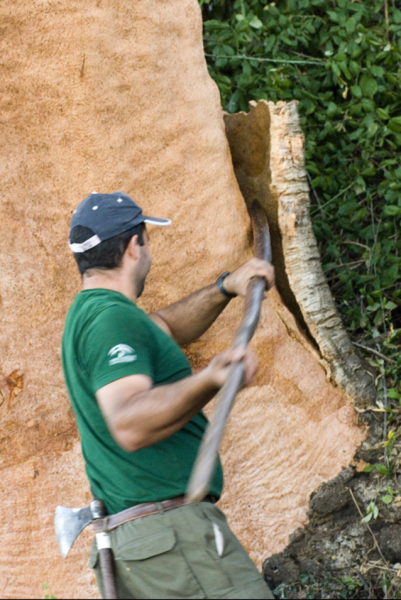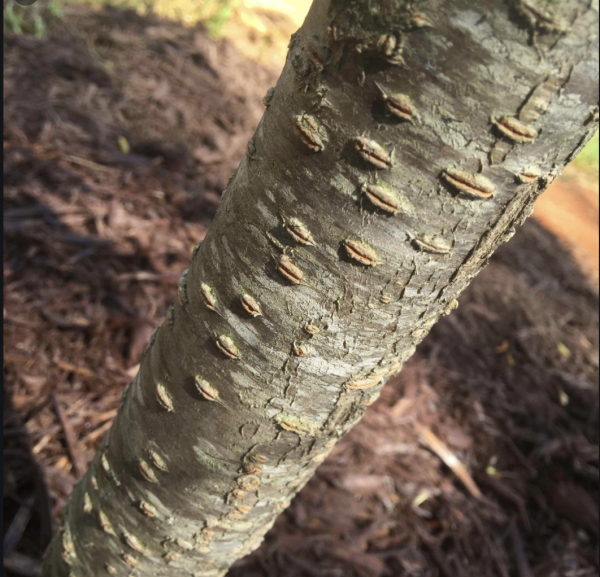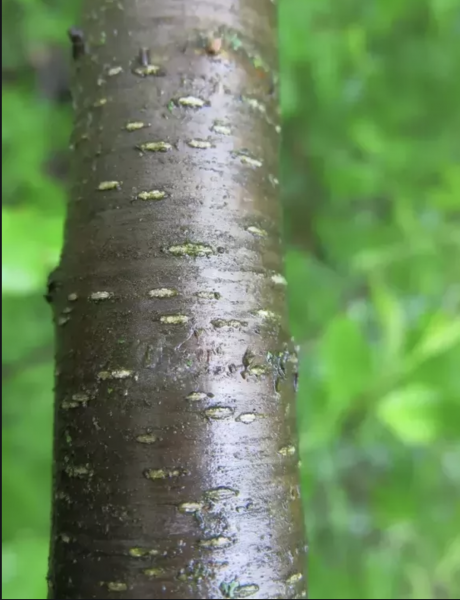Dr. Lew Feldman, Garden Director
Of the many products obtained from plants, one often overlooked as having a plant origin is cork. Cork forms part of the bark of many trees, but is most often associated with one tree, the cork oak (Quercus suber), which is represented in the UC Botanical Garden by a planting in the Crops of the World section.
 The cork oak, and many other plants with bark containing cork, grow in grassland areas that experience rapidly moving, annual fires. In these habitats the cork serves as insulation, protecting the underlying living tissues from the heat of the fire.
The cork oak, and many other plants with bark containing cork, grow in grassland areas that experience rapidly moving, annual fires. In these habitats the cork serves as insulation, protecting the underlying living tissues from the heat of the fire.
Economically, the cork oak serves as the source for corks for bottles of wine, port and many other beverages. Portugal accounts for about 50% of the worldwide cork harvest (about 300,000 tons). Wine corks represent about 15% of cork usage by weight but about 65% of the revenues.
In nature, cork oaks commonly live for about 200 years. When a tree is about 25 years old it is prepared for commercial cork production by removing – stripping from the tree – the first formed cork, which because of its rather jumbled nature is not useful for making wine bottle corks. The tree is then allowed to recover for about 9-12 years before harvesting cork, which is now of a quality for making bottle corks. Cork harvesting demands workers of considerable skill and is done entirely by hand. Using a large axe, workers carefully remove the cork without inflicting much damage to the deeper layers on the tree. Harvested trees are then allowed to rest again for 9-12 years, during which time a new layer of cork is reformed, and then harvesting process is repeated, as before, until the tree reaches an age of about 125 years.


As already noted, cork functions to protect underlying tissues. Because these underlying tissues are alive, they need oxygen to survive. But because the cork is thick and impervious to gases, the inner living tissues could have difficulty obtaining oxygen, were it not for small pores oriented vertically to the tree trunk, which allow oxygen to move through the cork from the outside of the tree, across the bark to the inner, living tissues. Although these pores are not easily seen in the cork oak, in other tree species with cork the presence of these pores is evident as tiny openings in the cork; these openings are known as lenticels and are part of the bark of many trees, as pictured below.


Knowing about the existence of these pores is important in deciding how to orient the bore to make a wine bottle cork. Test yourself! Having described the orientation of the pores, select from the diagram below the answer(s) of how you would orient your bore in order to make a functional wine bottle cork.

Both answers B and C are correct! Answer A is incorrect because the orientation of the bore would allow the pore to run from the inside to the outside of the bottle, permitting a route for the escape (evaporation) of the wine.
